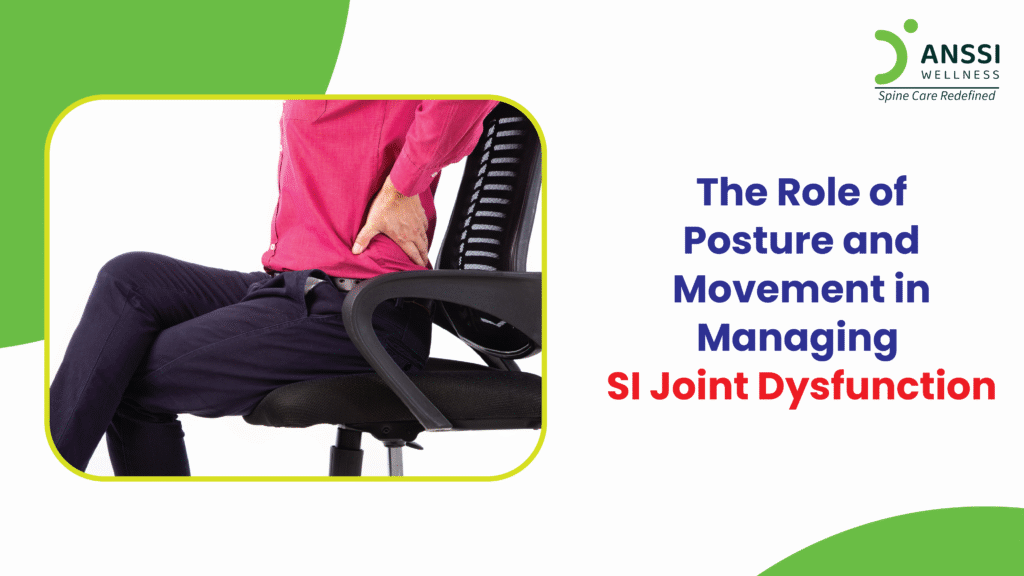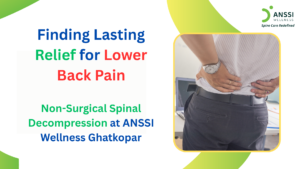Sacroiliac (SI) joint dysfunction is a common but often overlooked cause of lower back pain. Located at the base of the spine where the sacrum meets the pelvis, the SI joints play a vital role in transferring weight between the upper body and legs. When these joints become irritated or misaligned, they can cause discomfort, stiffness, and sometimes radiating pain in the hips, buttocks, or thighs.
Many people don’t realise that everyday habits, particularly poor posture and faulty movement patterns, can be key contributors to SI joint pain. Understanding and correcting these patterns can play a major role in recovery.
How Poor Posture Affects the SI Joint
In our modern lifestyle, we often sit for long hours at desks, drive frequently, or hunch over mobile devices. Unfortunately, these activities often come with poor posture. Slouching, leaning to one side, or sitting with crossed legs can shift the alignment of the pelvis and strain the SI joints. Over time, this unnatural stress can lead to joint inflammation and pain.
Standing posture also plays a role. Standing with uneven weight on one leg or allowing the pelvis to tilt forward (anterior pelvic tilt) increases the load on the SI joints.
The cumulative effect of these poor postural habits leads to muscle imbalances, tightness, and instability in the lower back and pelvic region, all of which exacerbate SI joint dysfunction.
Muscle Imbalances and Movement Issues
The muscles that support your spine and pelvis, like the glutes, core, hip flexors, and hamstrings, must work together to maintain stability. When some of these muscles are weak while others are overly tight, it creates imbalances that pull the pelvis out of alignment.
For instance:
- Weak gluteal muscles fail to support the pelvis during walking or standing.
- Tight hip flexors from prolonged sitting can tilt the pelvis forward, increasing lumbar strain.
- Overactive hamstrings might compensate for weak glutes, further contributing to dysfunctional movement.
Additionally, poor movement habits such as bending from the waist instead of the hips, twisting improperly, or lifting heavy objects with incorrect form can all strain the SI joint. These faulty patterns not only cause acute injury but also contribute to chronic irritation of the joint over time.
Importance of Corrective Posture and Movement
Managing SI joint dysfunction without surgery is possible and effective, especially when approached holistically. Posture and movement correction are essential components of this recovery process.
Here’s how to start:
1. Postural Awareness
Becoming mindful of your body’s alignment is the first step.
This includes:
- Sitting with both feet flat on the ground
- Keeping your back supported with a lumbar cushion
- Avoiding crossing your legs for extended periods
- Maintaining an upright but relaxed posture when standing
2. Ergonomic Adjustments
Your workspace setup can make a huge difference. Ensure your desk, chair, and screen are aligned to reduce strain on your spine and pelvis. Use a supportive chair and consider a sit-stand desk to break up long periods of sitting.
3. Strengthening Exercises
Engaging in specific strengthening routines can rebalance muscle groups:
- Core exercises (like planks and pelvic tilts) stabilise the spine and pelvis.
- Glute bridges and clamshells activate the glutes and promote pelvic stability.
- Side-lying leg lifts strengthen the hip abductors, improving support around the SI joint.
4. Stretching Tight Muscles
Gentle stretching of tight hip flexors, hamstrings, and lower back muscles can restore proper pelvic alignment. Yoga poses such as child’s pose, pigeon stretch, and cat-cow can be effective when done under guidance.
5. Movement Retraining
A physiotherapist can teach you safe ways to bend, lift, and twist to avoid unnecessary strain on the SI joint. This includes hip-hinge techniques, proper squat form, and walking with proper gait mechanics.
Non-Surgical Treatments That Support Recovery
Correcting posture and movement is often combined with non-invasive treatment methods to achieve faster and longer-lasting relief.
- Physiotherapy: A structured therapy plan tailored to your specific muscle imbalances, movement faults, and pain triggers is highly beneficial. Therapists can guide you through recovery exercises and provide hands-on techniques like myofascial release or mobilisation.
- Non-Surgical Spinal Decompression Treatment: This non-surgical treatment gently stretches the spine to reduce pressure on its compressed joints and discs. When used as part of a comprehensive plan, it can reduce inflammation and restore joint spacing, easing SI joint pain.
- Posture Correction Programs: Clinics often offer posture retraining sessions that include biofeedback, muscle strengthening, and ergonomic education to break long-held habits.
- Lifestyle Changes: Maintaining a healthy weight, staying active, managing stress, and quitting smoking can significantly reduce inflammation and improve spinal health.
About ANSSI:
ANSSI Wellness focuses on improving the quality of life for patients suffering from spinal issues, aiming to provide relief where other conventional treatments have failed. Through advanced non-surgical spinal decompression treatment, ANSSI is committed to helping patients avoid surgery and recover in a safe, effective, and compassionate environment.
Connect with ANSSI Wellness on LinkedIn, Instagram, and Facebook for expert guidance.




